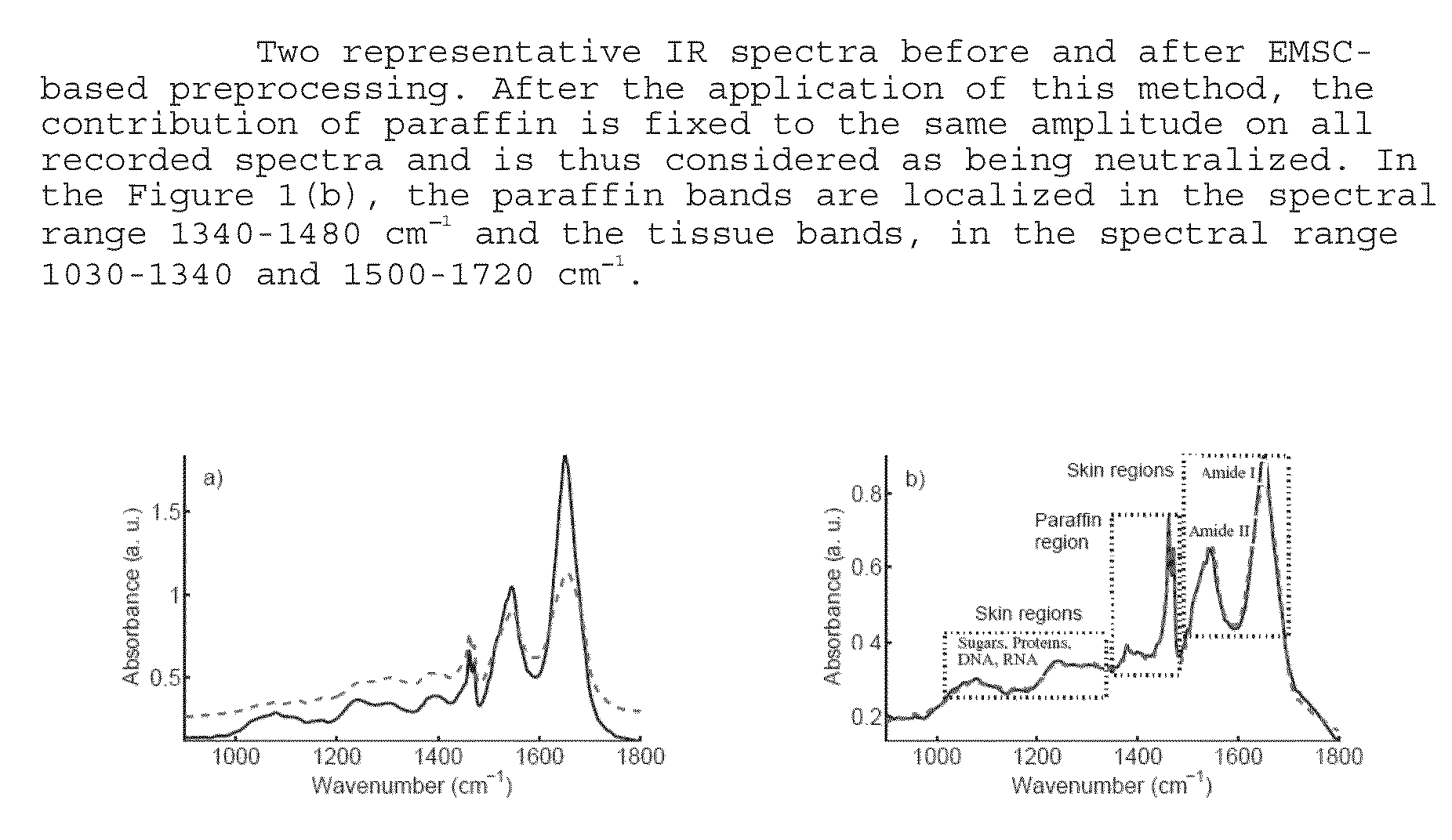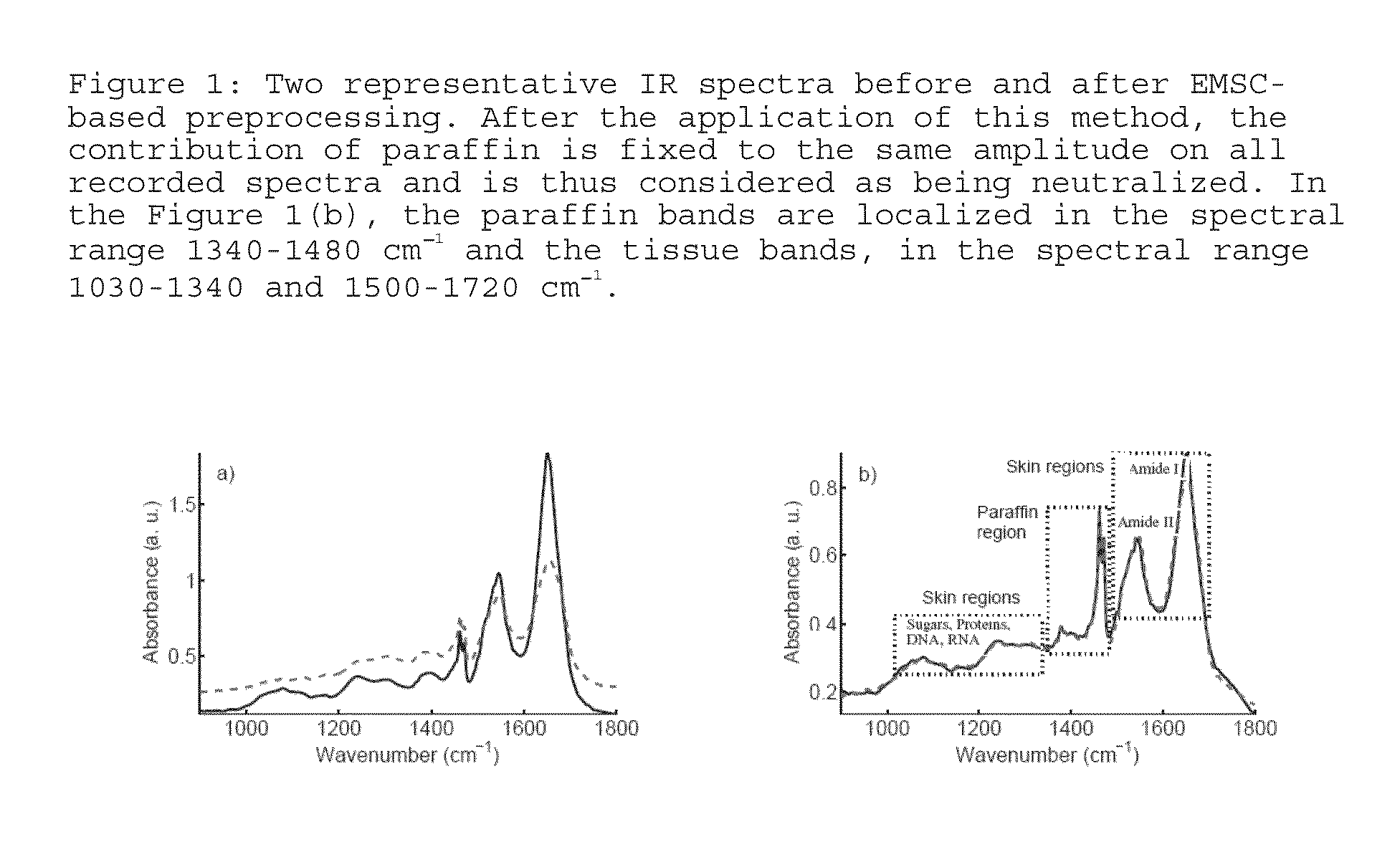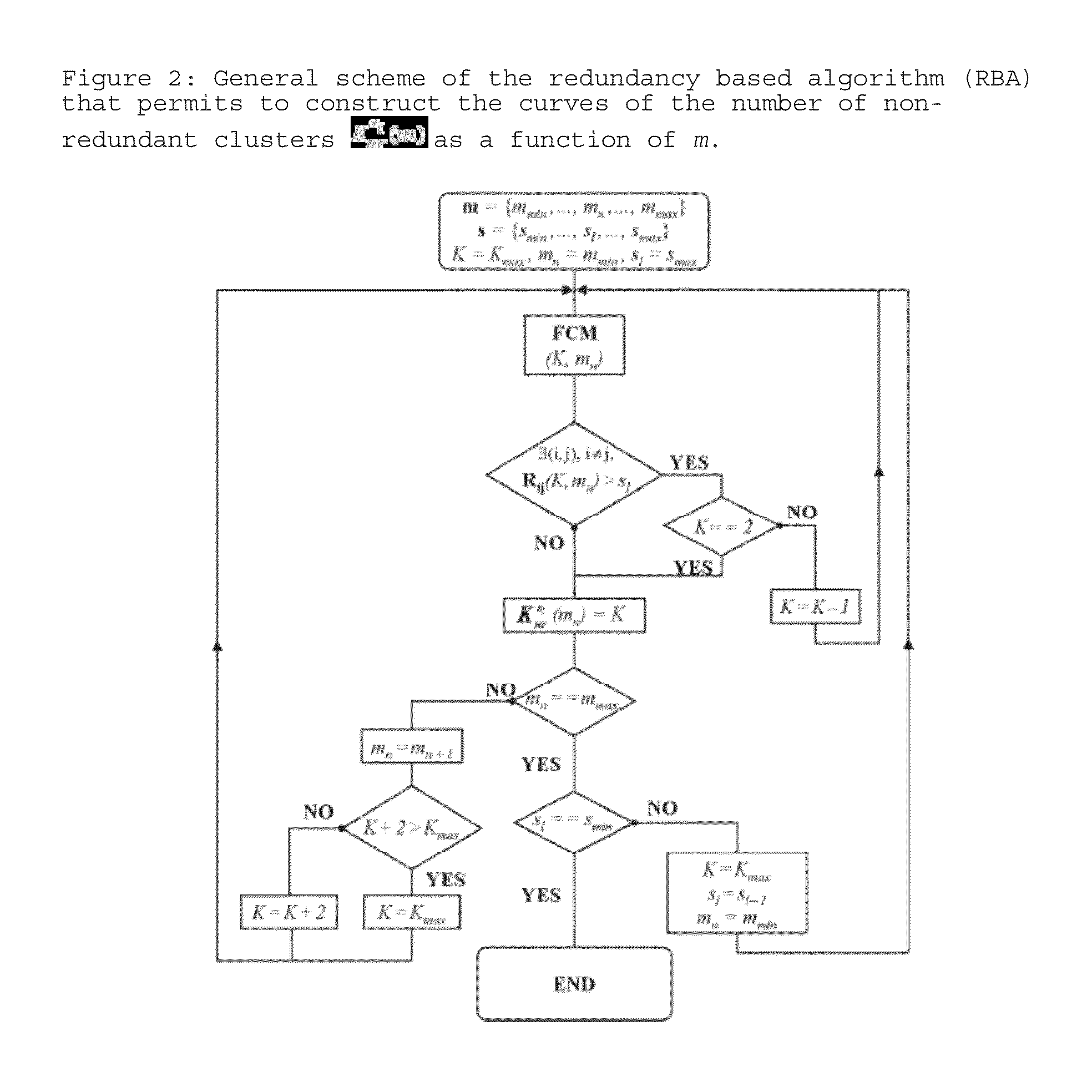Fuzzy clustering algorithm and its application on carcinoma tissue
a clustering algorithm and tumor tissue technology, applied in image analysis, image enhancement, instruments, etc., can solve the problems of not being able to consider the progressive transition between noncancerous tissues and cancer lesions, not being able to reveal every nuance of intratumoral heterogeneity, and creating redundant cluster images
- Summary
- Abstract
- Description
- Claims
- Application Information
AI Technical Summary
Benefits of technology
Problems solved by technology
Method used
Image
Examples
example 1
Materials and Methods
[0022]The developed algorithm was applied on the IR datasets acquired on 13 biopsies of formalin fixed paraffin-embedded human skin carcinomas: squamous cell carcinomas (SCC, n=3), basal cell carcinomas (BCC, n=4) and Bowen's diseases (n=6). The samples were obtained from the tumor bank of the Pathology Department of the University Hospital of Reims (France). Ten micron-thick slices were cut from samples and mounted, without any particular preparation, on a calcium fluoride (CaF2) (Crystran Ltd., Dorset, UK) window for FT-IR imaging. Adjacent slices were cut and stained with hematoxylin and eosin (H&E) for conventional histology.
FTIR Data Collection
[0023]FT-IR hyperspectral images were recorded with a Spectrum Spotlight 300 FT-IR imaging system coupled to a Spectrum one FT-IR spectrometer (Perkin Elmer Life Sciences, France) with a spatial resolution of 6.25 μtm and a spectral resolution of 4 cm−1. The device was equipped with a nitrogen-cooled...
example 2
Experiments with Existing Clustering Methods
[0027]The main objective of clustering is to find similarities between spectral datasets and then group similar spectra together in order to reveal areas of interest within tissue sections. In cancer research, clustering methods allow creating highly contrasted color-coded images permitting to localize tumoral areas within a complex tissue. Details of the clustering method is described by Ly, E.; Piot, O.; Wolthuis, R.; Durlach, A.; Bernard, P.; and Manfait, M., (Analyst 2008, 133, 197-205) and by Lasch, P.; Haensch, W.; Naumann, D.; and Diem, M. (Biochimica et Biophysica Acta 2004, 1688, 176-186), which are adopted herein in their entirety.
“Hard” Clustering
[0028]KM clustering is a non-hierarchical partition clustering method. The aim of KM was to minimize an objective function based on a distance measure between each spectrum and the centroid of the cluster to which the spectrum was affected. This algorithm iteratively partitioned the dat...
example 3
Development of the Redundancy Based Algorithm for the Optimal Estimation of FCM Parameters
[0033]This innovative algorithm (RBA), based on the FCM clusters redundancy, aimed at determining an optimal couple (Kopt, mopt) without any a priori knowledge of the dataset. We had chosen here the intercorrelation coefficient Rij(K,m) between two clusters i and j as the measure of redundancy:
Rij(K,m)=C(i,j)C(i,i)C(j,j)
where c(i,j)=Σq=1Q(uqi−ūi)(uqj−ūj) is the covariance between the membership values of clusters i and j given by FCM for a couple (K,m), c(i,i)=Σq−1Q(uqi−ūi)2 and c(j,j)=Σq=1Q(uqj−−ūj)2 are the variances of the membership values of cluster i and j, with the means
u_i=1Q∑q=1Quqiandu_j=1Q∑q=1Quqj.
The RBA is composed of three steps. Firstly, the iterative process for the reduction of the number of clusters was performed. For this step, N different values of the fuzziness index belonging to the set m={m1, . . . , mn, . . . , mN} and L different values of the threshold belonging to the...
PUM
 Login to View More
Login to View More Abstract
Description
Claims
Application Information
 Login to View More
Login to View More - R&D
- Intellectual Property
- Life Sciences
- Materials
- Tech Scout
- Unparalleled Data Quality
- Higher Quality Content
- 60% Fewer Hallucinations
Browse by: Latest US Patents, China's latest patents, Technical Efficacy Thesaurus, Application Domain, Technology Topic, Popular Technical Reports.
© 2025 PatSnap. All rights reserved.Legal|Privacy policy|Modern Slavery Act Transparency Statement|Sitemap|About US| Contact US: help@patsnap.com



